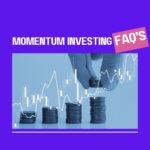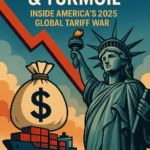What are the key factors that trigger high market volatility?
High market volatility is typically triggered by factors that introduce uncertainty or rapid changes in investor sentiment. Key drivers include macroeconomic events like interest rate changes, inflation data, or GDP reports; geopolitical tensions such as wars, elections, or diplomatic conflicts; and global market movements, especially from the US or China.
Corporate earnings surprises, major policy changes (like Union Budget or RBI announcements), and currency or commodity price fluctuations (like oil or rupee movements) can also spike volatility. Additionally, unexpected events like pandemics or natural disasters often cause sharp market swings due to fear and uncertainty.
Does high volatility always lead to market corrections or crashes?
No, high volatility does not always lead to market corrections or crashes. While it reflects uncertainty and sharp price movements, it can occur in both rising and falling markets. Volatility often increases during events like earnings announcements, policy changes, or global news, which may cause temporary price swings without resulting in a sustained downtrend.
A market correction (typically a 10% drop from recent highs) or a crash (a sudden, severe decline) usually requires deeper underlying issues like economic slowdown, financial crises, or panic selling. In some cases, high volatility can even signal buying opportunities or mark the beginning of a trend reversal.
What does the India VIX indicate about market sentiment in the short term?
The India VIX (Volatility Index) indicates the expected volatility in the Nifty 50 index over the next 30 days, based on options pricing. A rising India VIX suggests increasing fear or uncertainty among investors, often ahead of major events like elections, budgets, or global shocks—indicating potential market turbulence.
Conversely, a falling VIX signals confidence, stability, or complacency, implying a calmer market environment. In short, India VIX acts as a "fear gauge" and helps traders assess short-term sentiment—higher VIX implies cautious or defensive strategies, while lower VIX often aligns with bullish sentiment.
What impact does an increasing India VIX have on options premiums and market liquidity?
An increasing India VIX reflects higher expected volatility, which directly leads to a rise in options premiums. Since options pricing factors in implied volatility, traders demand higher premiums to compensate for greater risk. This benefits option sellers but increases costs for buyers.
As for market liquidity, rising VIX can have mixed effects—short-term spikes may cause liquidity to tighten as traders become cautious, widen bid-ask spreads, or reduce positions. However, heightened volatility can also attract speculators and hedgers, temporarily boosting trading volumes. Overall, a rising VIX signals costlier options and cautious market behavior.
What is the significance of PCR in analyzing market sentiment—bullish or bearish?
The Put-Call Ratio (PCR) is a widely used sentiment indicator that helps gauge whether the market is leaning bullish or bearish. It is calculated by dividing the open interest or volume of put options by call options.
A high PCR (more puts than calls) typically signals bearish sentiment, as traders are buying more puts to hedge or speculate on a decline. However, it can also be viewed as contrarian bullish, suggesting the market may be oversold.
A low PCR (more calls than puts) indicates bullish sentiment, but extreme lows may signal overconfidence or potential for a reversal. Thus, PCR helps identify market mood and potential turning points, especially when combined with other indicators.
How should one interpret extremely high or low PCR values?
Extremely high or low PCR (Put-Call Ratio) values are often interpreted as contrarian signals, indicating potential market reversals:
🔺 Extremely High PCR (e.g., above 1.3):
Suggests heavy put buying, showing widespread bearish sentiment or hedging.
Contrarian view: The market may be oversold, and a rebound could be near.
🔻 Extremely Low PCR (e.g., below 0.7):
Indicates aggressive call buying, reflecting strong bullish sentiment or overconfidence.
Contrarian view: The market might be overbought, with risk of pullback or correction.
However, PCR should not be used in isolation. Its significance increases when analyzed relative to historical averages, the broader market context, and supporting indicators like VIX, open interest, or technical levels.
How do FII/DII activity and macroeconomic triggers influence both India VIX and PCR?
🔄 Impact on India VIX:
Heavy FII selling (especially in equities or index futures) usually leads to rising VIX, reflecting growing fear or uncertainty.
Positive DII buying can stabilize markets, often leading to a fall in VIX if confidence returns.
Macroeconomic events like RBI policy announcements, inflation data, GDP figures, global interest rate changes (e.g., US Fed), or geopolitical events can cause sharp moves in VIX, depending on how unexpected or impactful the news is.
⚖️ Impact on PCR:
When FIIs build aggressive long positions in index calls or unwind puts, the PCR falls, signaling bullish sentiment.
Conversely, if they load up on puts for protection or speculation, PCR rises, indicating bearish sentiment.
DIIs may also influence PCR when managing large portfolios, adjusting hedges through index options.



